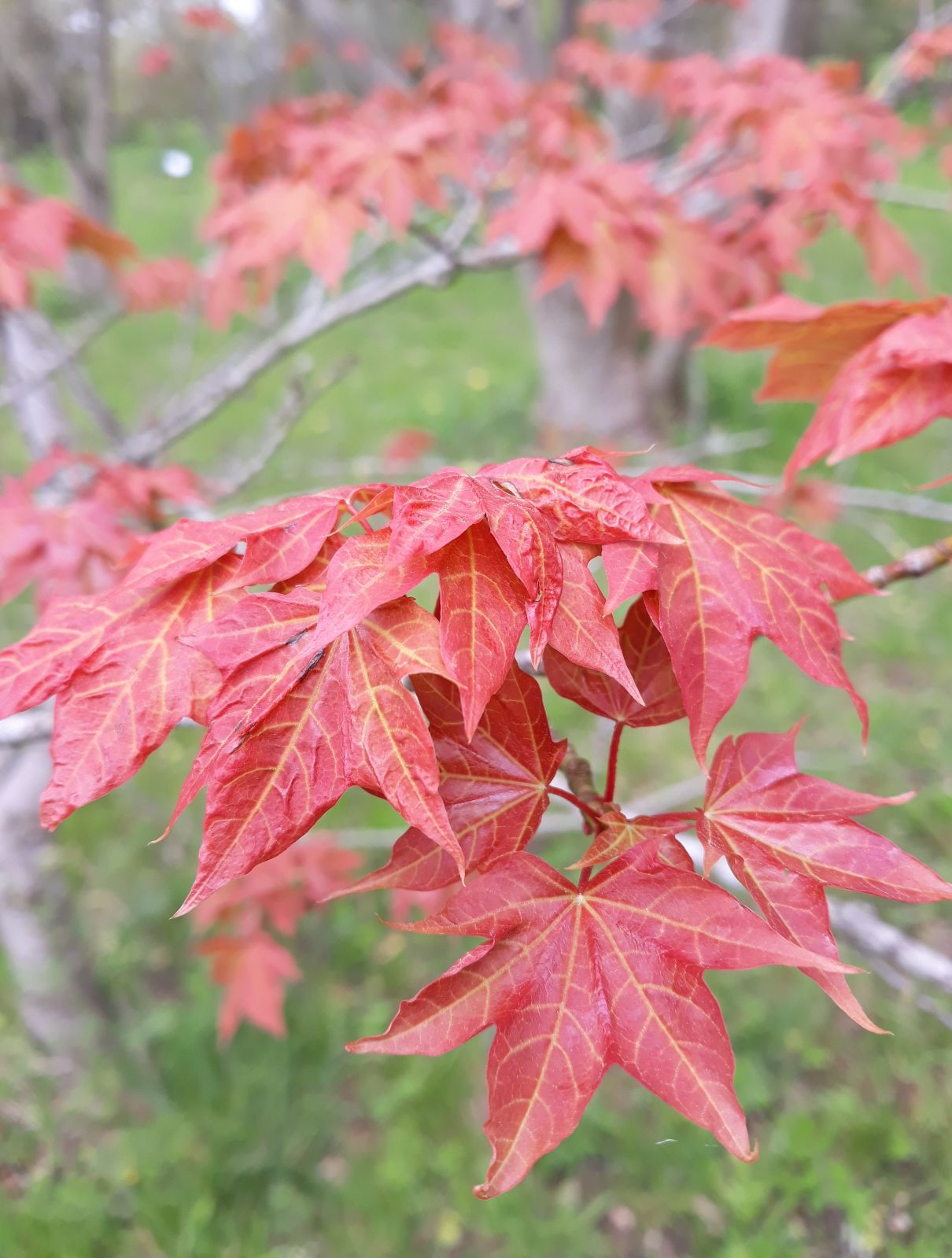Acer 'Gold Coin'
Sponsor
Kindly sponsored by
a member of the International Dendrology Society
Credits
Dan Crowley (2020)
Recommended citation
Crowley, D. (2020), 'Acer 'Gold Coin'' from the website Trees and Shrubs Online (treesandshrubsonline.
Genus
- Acer
- Sect. Platanoidea
Other taxa in genus
- Acer acuminatum
- Acer amplum
- Acer argutum
- Acer barbinerve
- Acer buergerianum
- Acer caesium
- Acer calcaratum
- Acer campbellii
- Acer campestre
- Acer 'Candy Stripe'
- Acer capillipes
- Acer cappadocicum
- Acer carpinifolium
- Acer 'Cascade'
- Acer caudatum
- Acer ceriferum
- Acer chapaense
- Acer chienii
- Acer circinatum
- Acer cissifolium
- Acer × conspicuum
- Acer cordatum
- Acer coriaceifolium
- Acer × coriaceum
- Acer crataegifolium
- Acer davidii
- Acer diabolicum
- Acer distylum
- Acer divergens
- Acer duplicatoserratum
- Acer elegantulum
- Acer erianthum
- Acer 'Esk Flamingo'
- Acer fargesii
- Acer fenzelianum
- Acer flabellatum
- Acer forrestii
- Acer franchetii
- Acer × freemanii
- Acer fulvescens
- Acer 'Gimborn'
- Acer ginnala
- Acer glabrum
- Acer granatense
- Acer grandidentatum
- Acer griseum
- Acer heldreichii
- Acer henryi
- Acer × hillieri
- Acer hookeri
- Acer hyrcanum
- Acer japonicum
- Acer kawakamii
- Acer komarovii
- Acer laevigatum
- Acer laurinum
- Acer laxiflorum
- Acer lobelii
- Acer longipes
- Acer macrophyllum
- Acer mandshuricum
- Acer maximowiczianum
- Acer maximowiczii
- Acer metcalfii
- Acer miaotaiense
- Acer micranthum
- Acer 'Mindavi'
- Acer 'Minorient'
- Acer miyabei
- Acer miyabei × campestre
- Acer monspessulanum
- Acer morifolium
- Acer 'Mozart'
- Acer oblongum
- Acer obtusifolium
- Acer okamotoanum
- Acer oliverianum
- Acer opalus
- Acer orientale
- Acer palmatum
- Acer papilio
- Acer pauciflorum
- Acer pectinatum
- Acer pensylvanicum
- Acer pentaphyllum
- Acer pentapotamicum
- Acer pictum
- Acer pilosum
- Acer pinnatinervium
- Acer platanoides
- Acer platanoides × amplum
- Acer platanoides × truncatum
- Acer × pseudoheldreichii
- Acer pseudoplatanus
- Acer pseudosieboldianum
- Acer pubinerve
- Acer pycnanthum
- Acer rubescens
- Acer rubrum
- Acer rufinerve
- Acer saccharinum
- Acer saccharum
- Acer sempervirens
- Acer 'Serpentine'
- Acer serrulatum
- Acer shenkanense
- Acer sieboldianum
- Acer sikkimense
- Acer 'Silver Cardinal'
- Acer 'Silver Ghost'
- Acer sinense
- Acer sinopurpurascens
- Acer spicatum
- Acer stachyophyllum
- Acer taronense
- Acer tataricum
- Acer tegmentosum
- Acer tenellum
- Acer tetramerum
- Acer tibetense
- Acer tonkinense
- Acer triflorum
- Acer truncatum
- Acer tschonoskii
- Acer turkestanicum
- Acer tutcheri
- Acer ukurunduense
- Acer velutinum
- Acer wardii
- Acer 'White Tigress'
- Acer wilsonii
- Acer × zoeschense
This taxon is often attributed to Acer amplum (or occasionally to A. longipes – see taxonomic note) though it appears not to be true A. amplum as it shows influence of another member of section Platanoidea, possibly A. cappadocicum. It is thus treated here as distinct from A. amplum. A shrub or small tree (4 m after 20 years). Bark green, turning grey. Leaves 5-lobed, sometimes with two additional basal lobes, lobes broadly ovate, apices shortly acuminate, petioles with milky sap. (van Gelderen & van Gelderen 1999).
USDA Hardiness Zone 6
RHS Hardiness Rating H6
Conservation status Not evaluated (NE)
Taxonomic note The treatment of this taxon as a cultivar of Acer longipes is likely a hangover from the treatment of van Gelderen et al. (1994), who included A. amplum as a subspecies of A. longipes.
Selected from a large shrub in the Aceretum at Plantentuin Esveld (Grimshaw & Bayton 2009), ‘Gold Coin’ is described as possessing ‘good vigour’ by le Hardÿ de Beaulieu (2003, p. 184). Its new growth is red, turning yellow and then, on older branches, green. In autumn it colours pale yellow (le Hardÿ de Beaulieu 2003). It is grown in both Europe and North America, with examples at collections including The Yorkshire Arboretum, UK, and the Dawes Arboretum, Ohio (American Public Gardens Association 2017), but is seldom seen, despite its spring brilliance.

